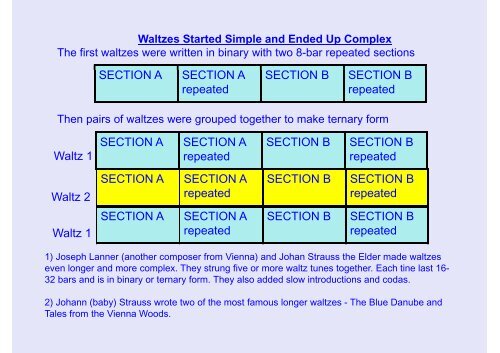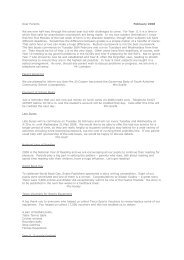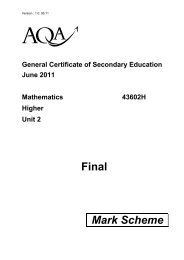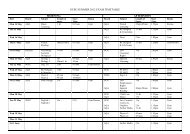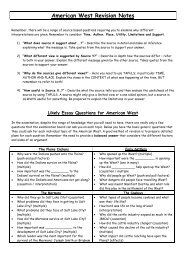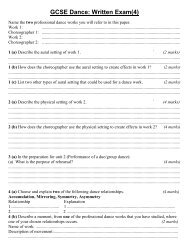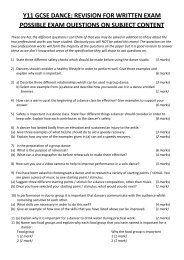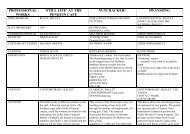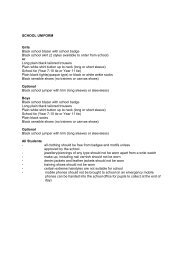Ballroom Dances (19th Century) Waltz 1) People ... - South Axholme
Ballroom Dances (19th Century) Waltz 1) People ... - South Axholme
Ballroom Dances (19th Century) Waltz 1) People ... - South Axholme
You also want an ePaper? Increase the reach of your titles
YUMPU automatically turns print PDFs into web optimized ePapers that Google loves.
<strong>Waltz</strong>es Started Simple and Ended Up Complex<br />
The first waltzes were written in binary with two 8-bar repeated sections<br />
SECTION A<br />
SECTION A<br />
repeated<br />
SECTION B<br />
SECTION B<br />
repeated<br />
Then pairs of waltzes were grouped together to make ternary form<br />
SECTION A SECTION A SECTION B SECTION B<br />
<strong>Waltz</strong> 1<br />
repeated repeated<br />
SECTION A SECTION A SECTION B SECTION B<br />
<strong>Waltz</strong> 2<br />
repeated<br />
repeated<br />
<strong>Waltz</strong> 1<br />
SECTION A<br />
SECTION A<br />
repeated<br />
SECTION B<br />
SECTION B<br />
repeated<br />
1) Joseph Lanner (another composer from Vienna) and Johan Strauss the Elder made waltzes<br />
even longer and more complex. They strung five or more waltz tunes together. Each tine last 16-<br />
32 bars and is in binary or ternary form. They also added slow introductions and codas.<br />
2) Johann (baby) Strauss wrote two of the most famous longer waltzes - The Blue Danube and<br />
Tales from the Vienna Woods.


